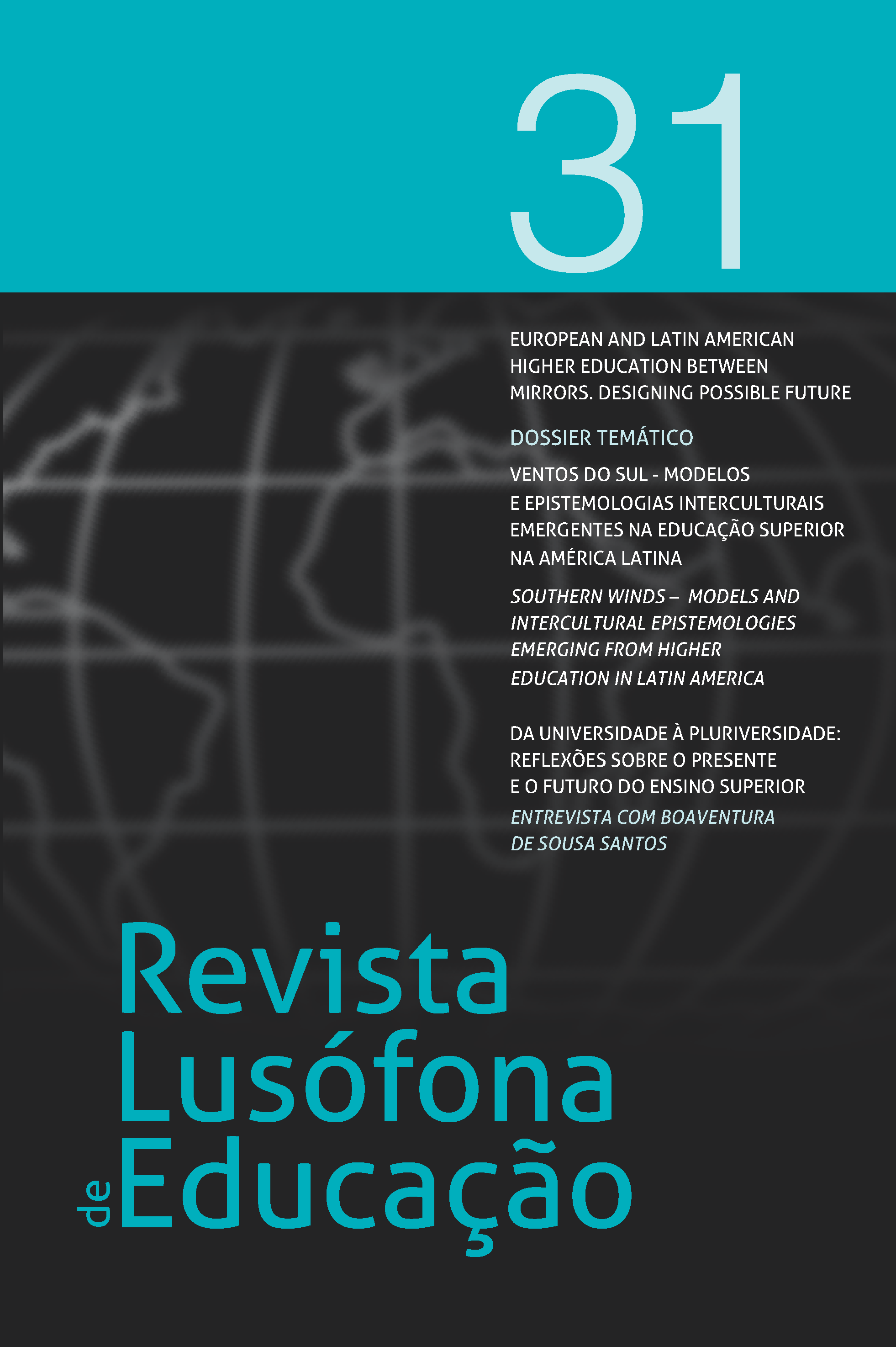How Intercultural is an “Intercultural University”? Some lessons from Veracruz, Mexico
Resumo
Since the beginning of the 21st century, a new institutional figure starts to appear in the arena of Mexican higher education: the socalled “intercultural university”. What was first presented and conceived just as another link in the chain of preschool, primary and increasingly also post-primary schools “with an intercultural and bilingual approach”, created in and for the indigenous and multilingual regions of Mexico, now starts to have characteristics of a new uni- versity subsystem destined to provide an academic training which is supposed to be culturally relevant to students who are defined as diverse and different in ethnic, linguistic and/or cultural terms. In practice, this new educational offer is focused on students from indigenous regions who have been excluded from formal higher education and have had access only recently to complete basic education and also gradual access to upper secondary education. In this contribution, we briefly sketch the general tendencies that characterize this emerg- ing educational subsystem, before illustrating a case study which stems from a collaborative ethnography that we are conducting with one of the intercultural universities, the Universidad Veracruzana Intercultural (UVI), in order to finally draw some conclusions on the allegedly “intercultural” character of this new educational institution.
Key words:
intercultural education; intercultural university; collaborative ethnography; Veracruz.
Downloads
- Os autores e as autoras conservam os direitos de autor, sem quaisquer honorários, e concedem à revista o direito de primeira publicação, com o trabalho simultaneamente licenciado sob a Licença Creative Commons CC-BY - Atribuição 4.0 Internacional, a qual permite que outros compartilhem (copiar e redistribuir o material em qualquer suporte ou formato) e adaptem (remixar, transformar e criar a partir do material para qualquer fim, mesmo que comercial), com reconhecimento de autoria e publicação inicial na RLE;
- Os autores e autoras têm autorização para assumir contratos adicionais separadamente para distribuição não-exclusiva da versão do trabalho publicada nesta revista (ex.: depositar em repositório institucional ou como capítulo de livro), com reconhecimento de autoria e publicação inicial na RLE;
- Os autores e autoras têm permissão e são estimulado/as a publicar e distribuir o seu trabalho online (ex.: em repositórios institucionais ou na sua página pessoal), já que isso pode aumentar o impacto e a citação do trabalho publicado (Veja O Efeito do Acesso Livre).








